Charentais Melon sorbet
It is hard to resist a refreshing melon sorbet, especially when the melon flavour is divine. In this post, we will exploit the goodness of a particularly pleasant member of the large Cantaloupe melon-family and a personal favourite of mine: the Charentais melon.
No Charentais melons available where you live? Don’t despair – this recipe should work well with most other melons (especially those of the Cantaloupe-type)!
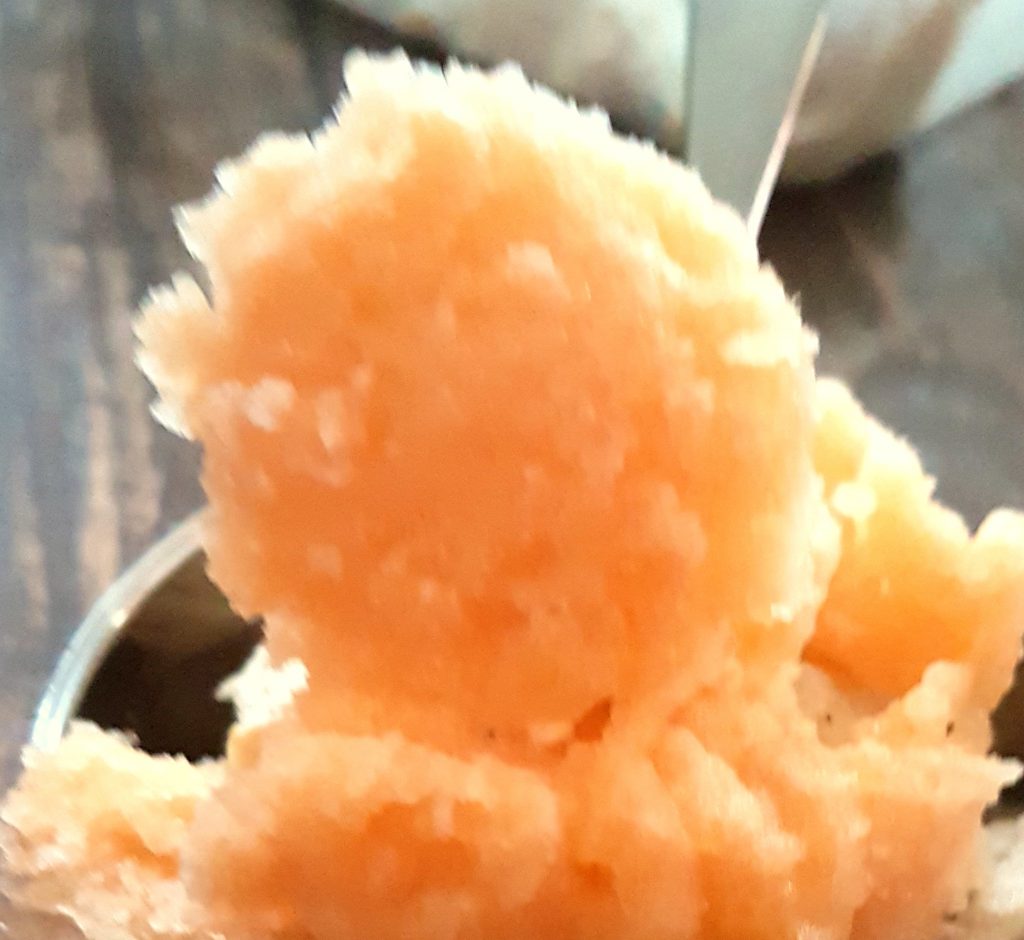
A snapshot of the freshly churned Charentais melon sorbet. While most people (me included) probably would consider it a divine treat already at this stage, those favouring a more “solid” overall impression could let the sorbet spend an extra hour or so in the freezer to firm up.
Melons come in many shapes and forms, and the cantaloupe melons probably originated from somewhere around South Asia and Africa. They came to Europe from Armenia long ago, and were commercially grown in the USA around 1890. The Charentais melon was cultivated in France in the 1920’s, developed to be a more refined, even more fragrant version of the cantaloupe. Today, most Charentais are produced in North Africa, with some production also in the United States.
Improved sorbet consistency without egg whites or gelatin? Try Agar agar!
I have taken the cues of proportions from Swedish Master confectioner Jan Hedh for this sorbet recipe, but in order to improve the consistency, I went with a nice vegetable stabiliser: Agar agar! If you can get hold of this natural, vegetable gelling agent, do give it a try – it has a noticable positive effect on the final texture and consistency of the sorbet! BUT … the recipe works quite well without Agar agar too, especially if you end up eating all of it relatively soon after churning (a very likely scenario in our house).
Agar agar is similar to gelatine in performance (can absorb liquid about twenty times its own weight), but is made from red algae or seaweed. Because Agar agar consists of about 80 % fibre and almost no calories, it has long been a popular bulking agent in Japan, where it is called Kanten. Kanten diets have also been quite popular there, so if you are interested in losing some weight to justify your ice cream-consumption, you might give it a thought 🙂 .
Preparing the sorbet
As with most sorbets, preparing a simple sugar syrup is a good starting point. Because we have to take account of the extra sugar we will be adding directly to the melon purée , you will notice that the proportions sugar/water for the simple sugar syrup deviate somewhat from the standard 50/50-formula.
Cut the melon, remove the seeds and purée the fruit. Now add about 50 gram of sugar – more should not be necessary, provided the melon is sufficiently ripe (you might even get away with less).
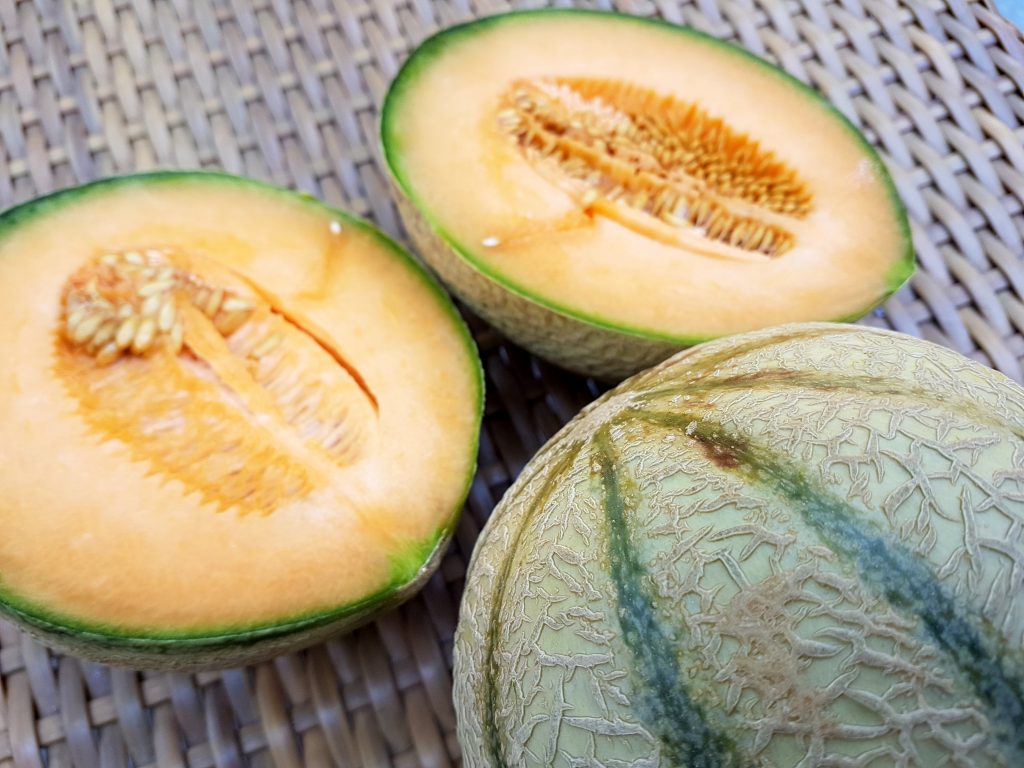
Removing the seeds from this type of melon is fortunately very easy – a couple of scoopings or so with a tablespoon should do.
Now, mix the fruit purée with the simple sugar syrup. If you want to check that the base is sweet enough/not overly sweet without using any particular instruments, do the Egg test.
Take some of the resulting sorbet base and use if for dissolving the agar agar. Agar agar does not solve in cold water, so you will need to heat it up in a small quantity of the liquid. When that liquid begins to cool down again, the agar agar will begin to solidify (at 37° Celsius (98.6° F), to be exact).
This will happen relatively quickly here, since the next step is to whisk together the now dissolved agar agar-liquid with the rest of the sorbet base: in other words, work quickly!
If you like, you may add some lemon juice to the sorbet base to counter-act a possibly too sweet end-result (but since the cold tends to dull most flavours, you may well decide to live without any lemon juice – let your tastebuds and personal preferences decide!).
Now, we will whisk it all together. The foam you see in the picture above is caused by the agar agar, but will leave no visible traces in the final sorbet. But whisk quickly – you do not want the agar agar to start solidifying into chunks of its own at this stage!
No ice cream machine? Do not worry!
I have successfully tried this melon recipe (without agar agar, and with other melons) still-frozen, without using any ice cream machine. You can do it, but your greatest challenge will probably be to reduce the size of the ice crystals as much as possible as the sorbet freezes. This is best done through vigorous churning by hand every now and then during the freezing process. But believe me – the end result is worth it!
The final result
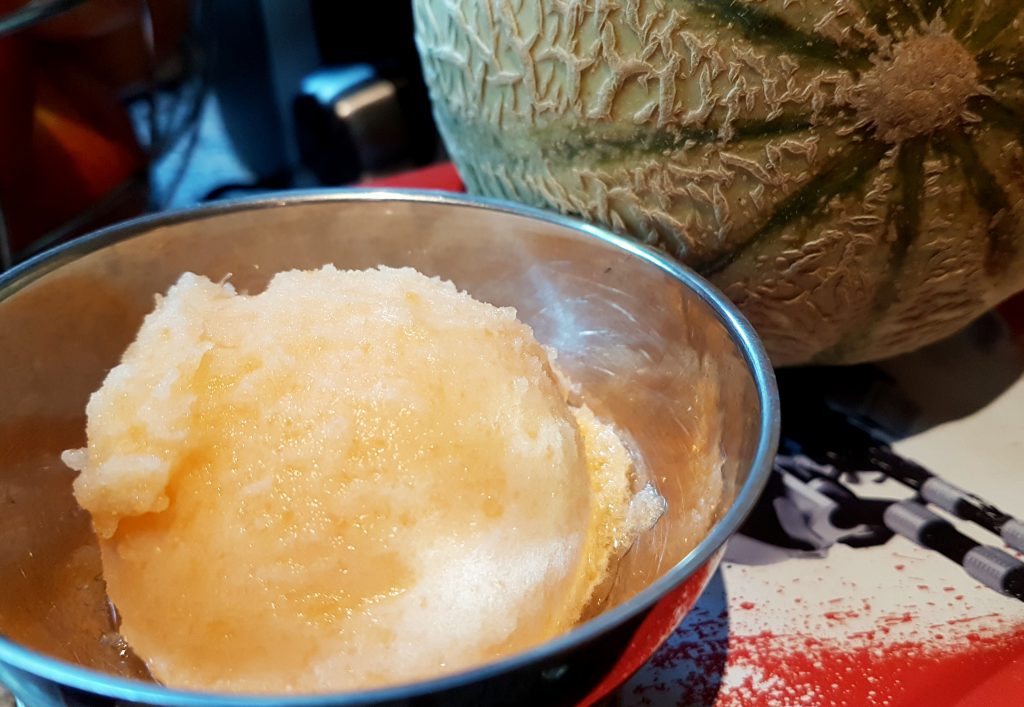
Fantastic melon sorbet, made on Charentais melon, and with Agar agar for improved texture and consistency
Melons can be very tasty and the Charentais clearly very high on the melon goodness-scale. Its sweet, delicious taste and vibrating reddish colour also makes it an excellent candidate for sorbet! The addition of a little Agar agar ensures great texture and consistency, perfect both for making the sorbet hold together longer outside the freezer and for pleasing those lucky enough to savour the sorbet. Both fans of melons and fans of fantastic sorbet should give this recipe a go!
And remember – the recipe should also work fine with other melons than the Charentais, and without any Agar agar.
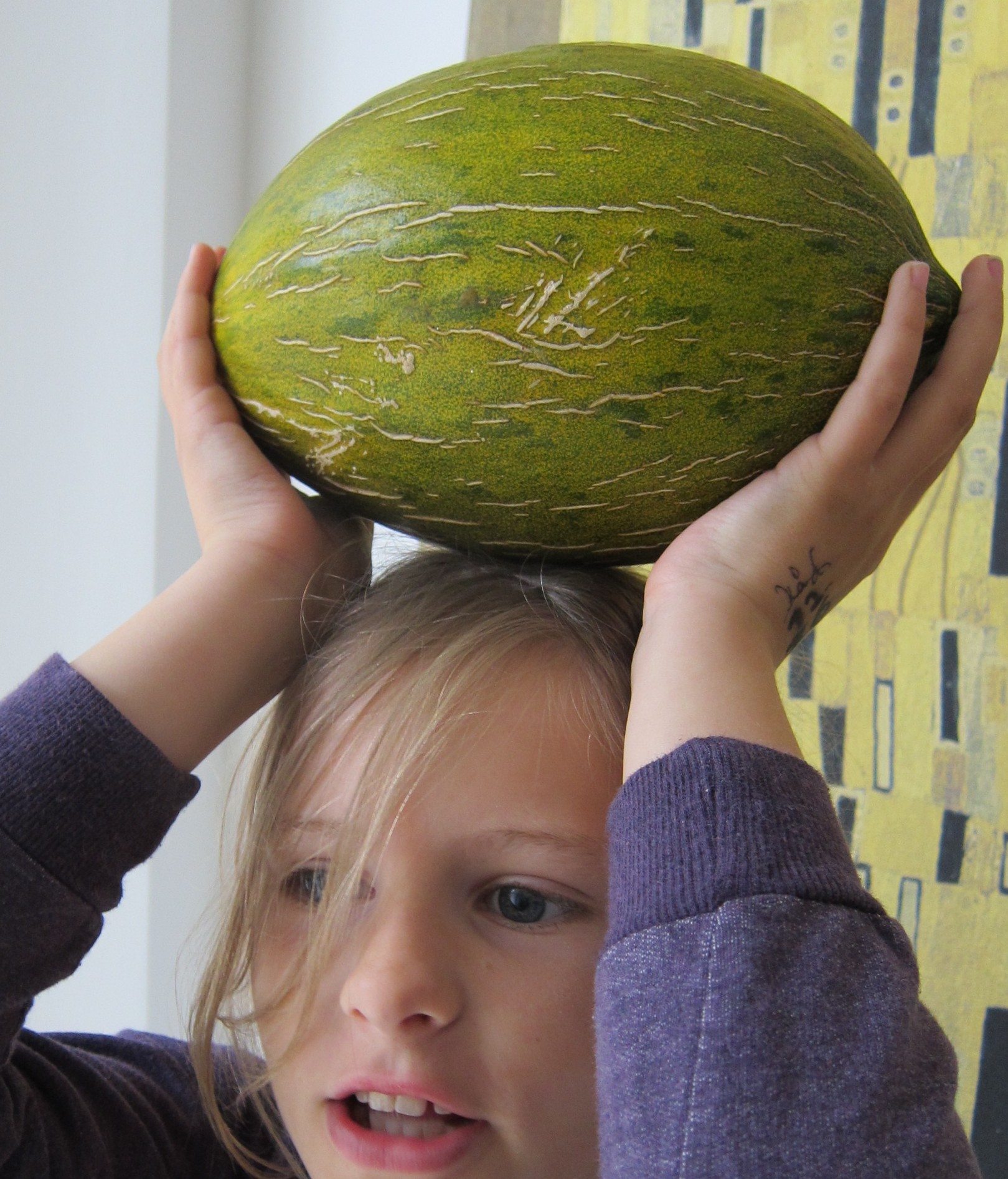
Charentais Melon sorbet
Ingredients
Method
- Prepare the simple sugar syrup by mixing water and sugar (by heating it, or simply by shaking it). Let cool down.
- Cut the melon, remove the seeds and purée the fruit, together with the 50 gram of sugar.
- Mix together the sugar syrup and the fruit purée. If you want to make sure that you have the appropriate level of sweetness for sorbet, do the Egg test.
- Take about 100 ml (about 0.4 cup) of the mixture, heat to about 40° Celsius (104 °F) and quickly whisk in about 2 grams of Agar agar.
- When well dissolved, pour back into the rest of the mixture, whisk well and churn in your ice cream machine according to its instructions.
- In case you worry that the sorbet might become too sweet for you, add lemon juice from about ½ lemon (according to your taste) to the base before churning it.
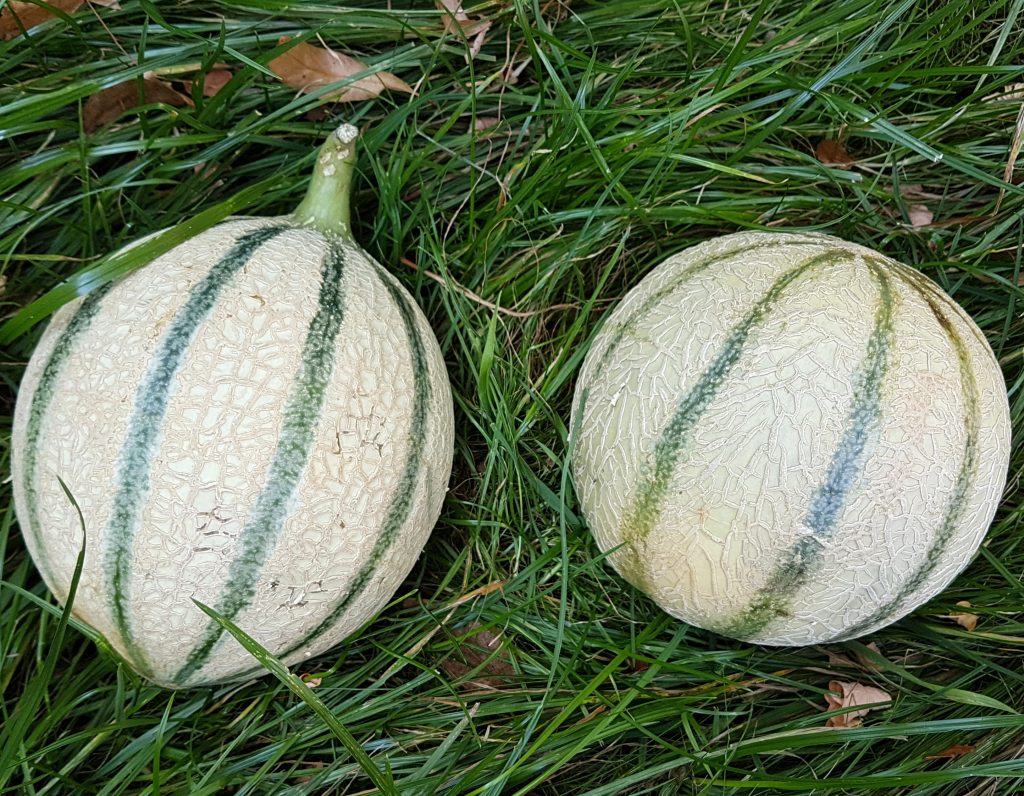
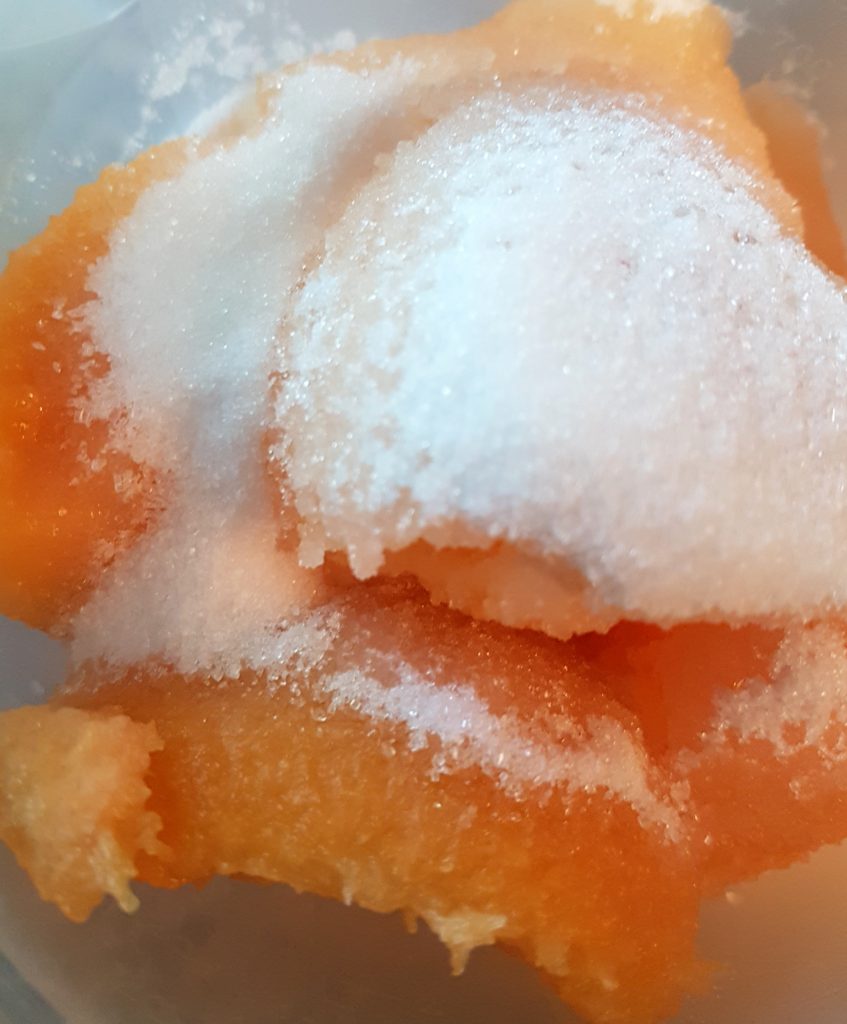
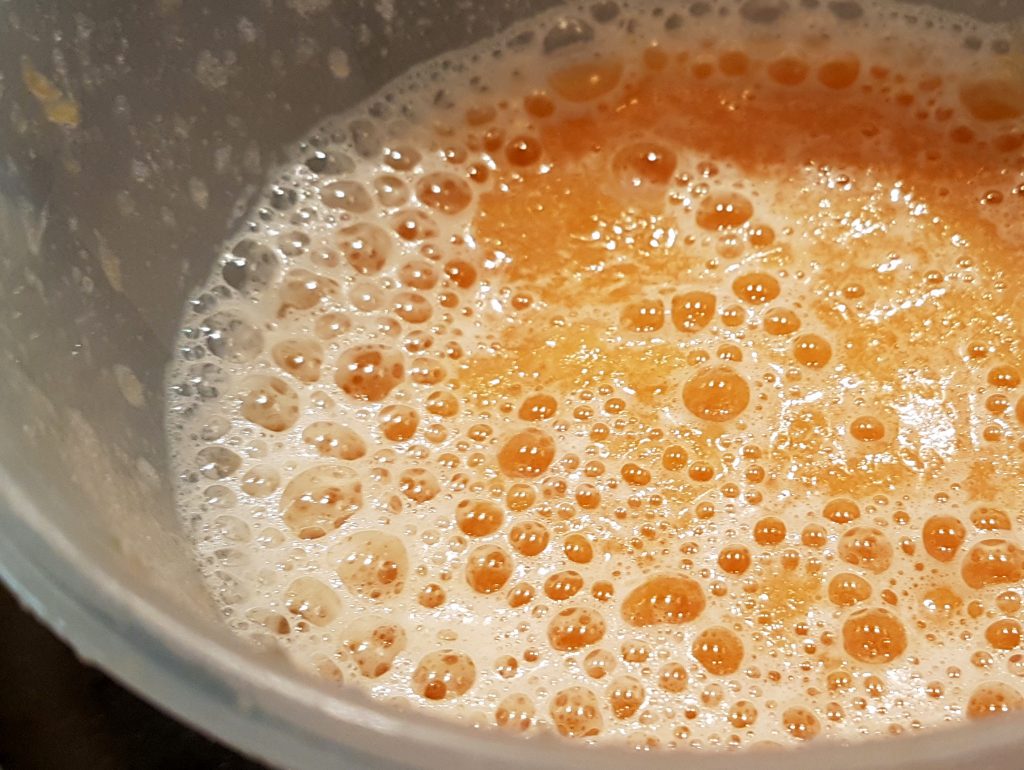
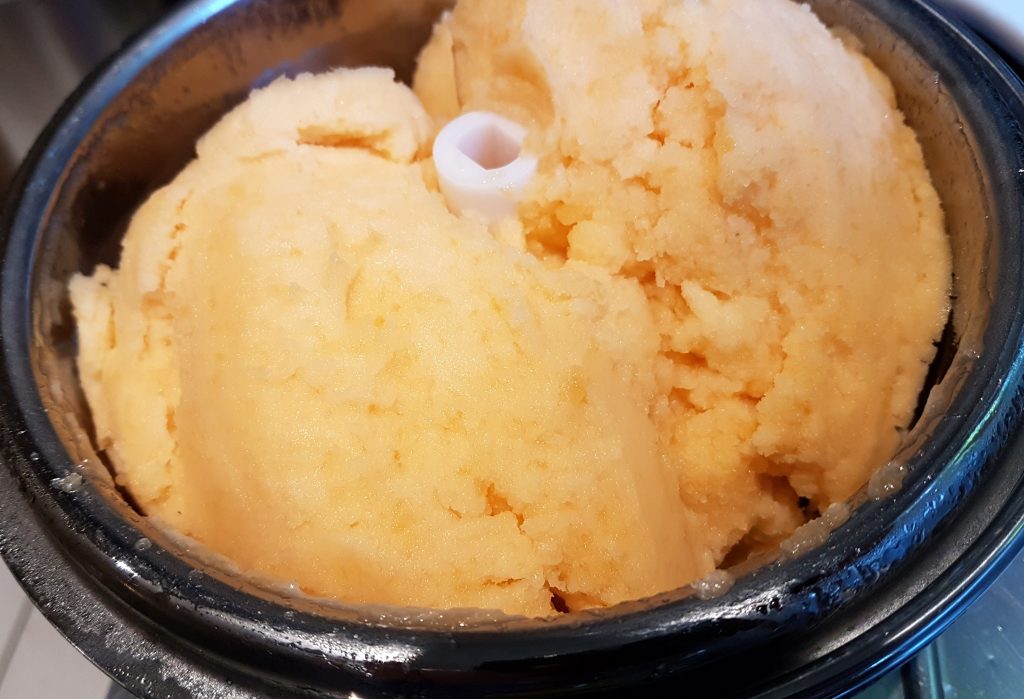
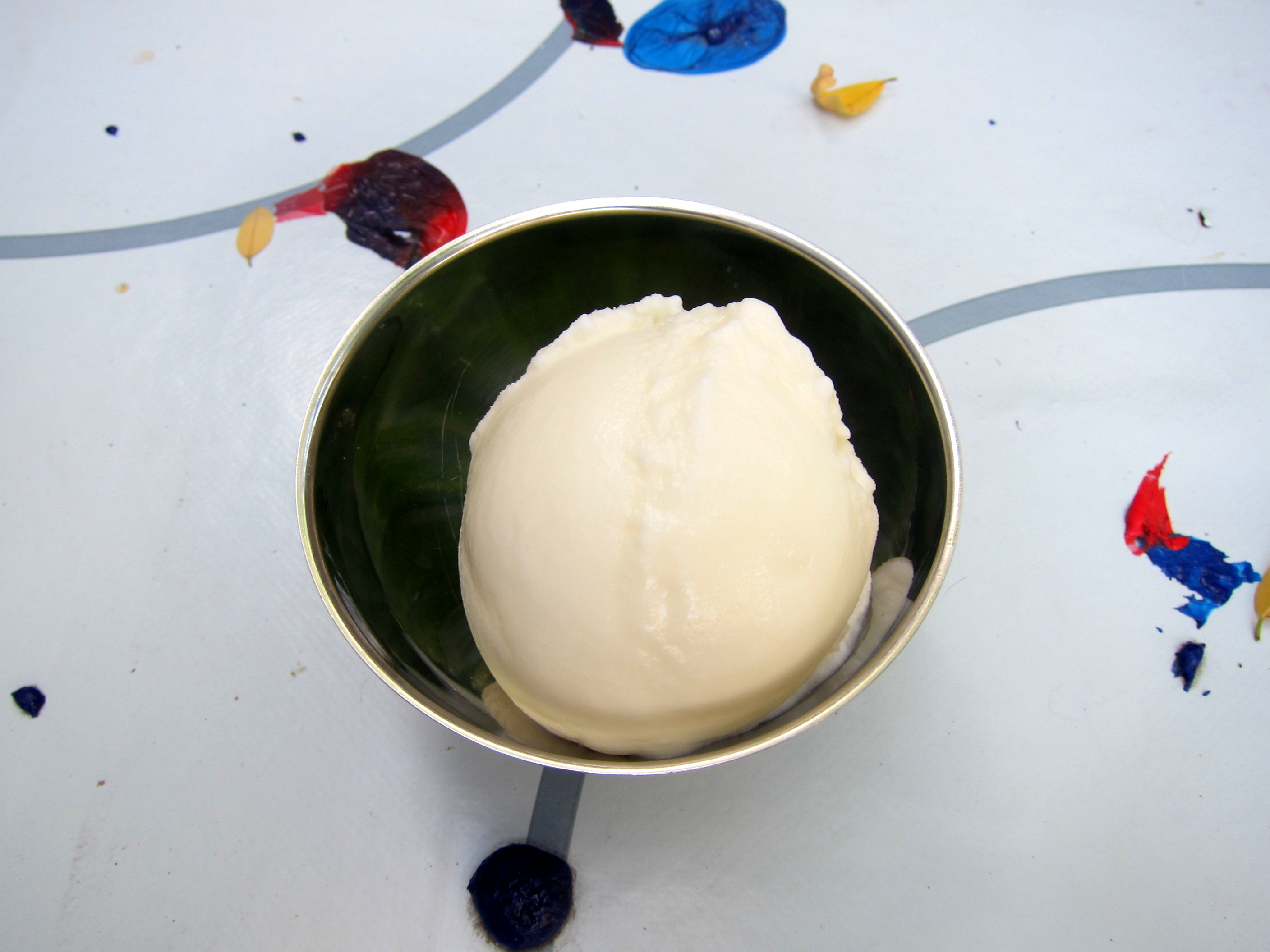
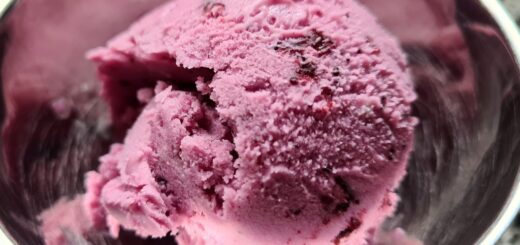



Hello could I successfully use the Italian meringue method with this recipe? Many thanks for all your fantastic recipes and tips, and for doing all the hard yards for the rest of us.
Hi Marcus,
Thanks for your kind words! And yes – you can certainly use the Italian meringue method and adapt this recipe accordingly.
Anders thanks so much for your reply. I’m hoping that It makes good use of some of the egg whites left over from ice cream recipes.